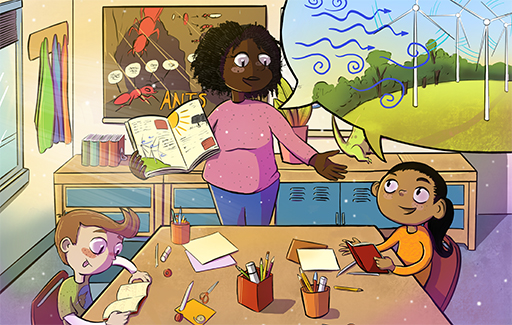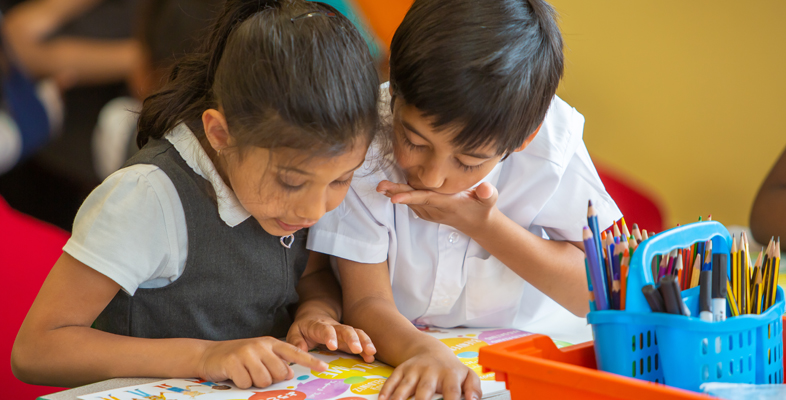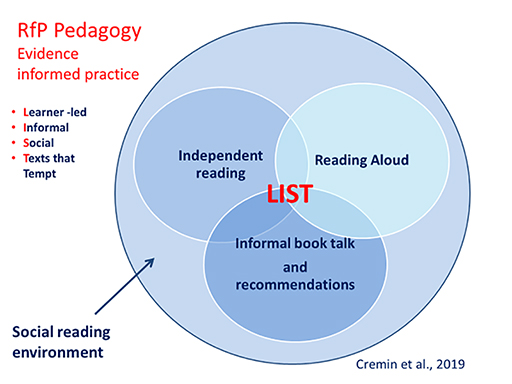Session 5: Reading for Pleasure pedagogy
Introduction
Developing children’s desire to read is a subtle process – adults cannot demand children find pleasure in the experience. Nonetheless, in recognising that children benefit cognitively, socially and emotionally from reading, educators seek to create relaxed invitational spaces to read, model the process and offer sustained support. Choice, agency and interaction are key features of fostering voluntary readers, while the texts children read also influence their persistence and depth of engagement.

A coherent, evidence informed RfP pedagogy developed in the UK by the Teachers as Readers (TaRS) research team, as seen in the Venn diagram in Figure 1, has been seen to be effective in motivating young readers and impacting positively upon their reading frequency and attitudes (Cremin et al., 2014). This encompasses planned time for reading aloud, independent reading, book talk and recommendations, all in the context of a social reading environment. The English Government’s RfP Audit uses this model and recognises that such practice is dependent upon teachers’ knowledge of texts and of their children as readers.
While RfP pedagogy needs to be explicitly planned, the four strands are highly interdependent, so professional skill, responsibility and rigour are essential. RfP pedagogy studies reveal that in order to nurture voluntary reading (i.e. the desired impact) what counts is not what teachers do per se (e.g. offer regular reading aloud), but why they do it, (i.e. their intent), and the way they shape their practice (i.e. their implementation of it) (Cremin et al., 2014 in the UK; Moses and Kelly, 2018, 2019 in the US).
RfP pedagogy which is responsive and flexible is most effective when it is underpinned by the following tenets, which form the acronym LIST. It needs to be: Learner-led, Informal, Social and with Texts that tempt. Using this RfP pedagogy ‘checkLIST’ can help teachers ensure their practice is planned with the goal of developing children’s pleasure and the habit of childhood reading in mind (Cremin, 2019). In this session you’ll look in turn at how each strand of the RfP pedagogy aligns with the LIST principles to help nurture motivated and engaged child readers.
By the end of this session, you will have:
- considered the four strands of interrelated RfP pedagogy: reading aloud, independent reading, book talk and recommendations, in the context of a social reading environment
- explored how the pedagogy checkLIST can be applied to each of the strands
- thought about the need to monitor the impact of changing pedagogy on children’s motivation and engagement as readers.

